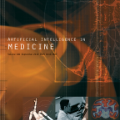Unmanned aerial vehicles (UAVs) play an increasingly important role in assisting fast-response post-disaster rescue due to their fast deployment, flexible mobility, and low cost. However, UAVs face the challenges of limited battery capacity and computing resources, which could shorten the expected flight endurance of UAVs and increase the rescue response delay during performing mission-critical tasks. To address this challenge, we first present a three-layer post-disaster rescue computing architecture by leveraging the aerial-terrestrial edge capabilities of mobile edge computing (MEC) and vehicle fog computing (VFC), which consists of a vehicle fog layer, a UAV client layer, and a UAV edge layer. Moreover, we formulate a joint task offloading and resource allocation optimization problem (JTRAOP) with the aim of maximizing the time-average system utility. Since the formulated JTRAOP is proved to be NP-hard, we propose an MEC-VFC-aided task offloading and resource allocation (MVTORA) approach, which consists of a game theoretic algorithm for task offloading decision, a convex optimization-based algorithm for MEC resource allocation, and an evolutionary computation-based hybrid algorithm for VFC resource allocation. Simulation results validate that the proposed approach can achieve superior system performance compared to the other benchmark schemes, especially under heavy system workloads.
翻译:暂无翻译



